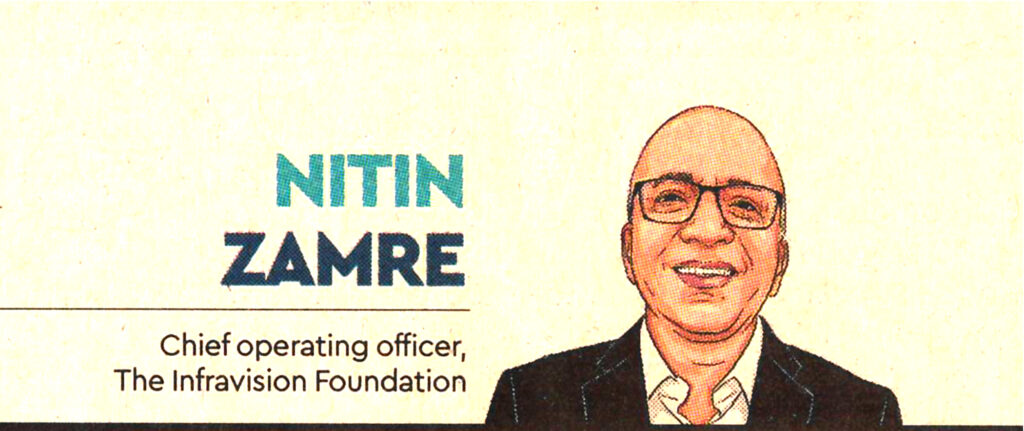There is still some distance to go before Surety Bonds start replacing Bank Guarantees.
In Budget 2022, Finance Minister made an announcement, introducing Surety Bonds (SB) as an Insurance product that could potentially replace Bank Guarantees (BG) in India. Insurance Regulatory & Development Authority of India (IRDAI) permitted general insurers to issue Surety Insurance Bonds from April 2022. In December 2022, the first SB product was introduced by insurer Bajaj Allianz. In March 2023, New India Assurance, the largest non-life insurer, entered the surety bonds business. These developments are not just welcome but are critical for India’s US$ 1.5 trillion National Infrastructure Pipeline (NIP). What is a Surety Bond? It is a legally binding contract entered into by the Principal (contractor), the Obligee (e.g. NHAI), and the Surety (Insurer) that underwrites the contractor’s performance by providing monetary compensation to the Obligee in case of contractor’s failure to perform. However, there is a fundamental difference between SB and BG. While BG needs a collateral, SB is like an insurance and needs a premium. SB therefore does not lock in funds. However unlike the usual insurance products, SB has the right to recover the claim from the Principal.
| How the costs compare: BG Vs SB | |
| Bank Guarantee | Surety Bond |
| Bank Commission – 0.6 – 3.0 % | Premium: 0.8 -3.5% The premium could be as high as 20% for Principals with poor credit history/health |
| Cash Margin/Collateral: 5%-30% In some cases, even higher for Principals with poor credit history/health | No cash margin/collateral |
| Renewal Fee – same as commission beyond the period of BG | Annual renewal premium |
| Security: Second floating charge on current assets | No security. But Indemnity from the entity requesting for Surety Bond issuance. |
BGs are needed throughout the project cycle – from bidding till completion of the defect liability period. Providing a BG is dependent on many things – Principal’s overall borrowing limits & creditworthiness, bank’s risk limits, project cost and risks, et al. The last 15 year’s huge growth in India’s EPC industry necessitated contractors to borrow more, provide more BGs. Banks also ran into stressed assets limiting their risk appetite, seeking higher margin money. This effectively squeezed the contractors’ growth. The most affected were the medium sized contractors. India plans to spend ~INR 115 lakh crore on infrastructure through NIP over the next five years. A recent Research Paper published by The Infravision Foundation estimates that such an investment would need BGs that could go upto as high as INR 95 lac crores. The banking system is unlikely to be able to provide BGs of this value, making critical an alternate instrument like SB to fill in the gap. Globally SBs is a $20 billion market, growing at about 6% CAGR, dominated by North America and Europe with 75% share. They are extensively used to support Infrastructure building with laws that mandate their use. US even has an SB Guarantee program to help small, emerging contractors who lack the experience and financial strength to obtain commercial BGs. In India, SBs were introduced over a year ago but have not taken off due to the severe challenges related to Adoption & Scale up, Pricing and Recovery of claims. The first challenge is lack of awareness about the product. While NHAI has shown willingness to accept SB, many other agencies including State Governments have not. The second challenge is lack of data. An insurance product needs Actuarial Pricing Models, using extensive historic customer data. In the case of SB market in India, the insurance companies do not have enough data. Lastly, there are huge concerns on recovery in case of claim. Insurance companies are not part of the Insolvency & Bankruptcy Code (IBC), and therefore may not get recourse to the project assets on default. Development of SB market is extremely important as the system’s inability to provide BGs can choke infrastructure development. The Infravision Foundation research presents a set of recommendations to effectively overcome SB’s challenges. One, Awareness Campaign – Awareness needs to be created among all the authorities by bringing them on the same page on acceptance of SBs. Unique nature of SBs needs to be understood and factored into structuring, pricing and capital guidelines. Two, Solvency Ratios – Unlike the standard insurance products, SB issuers enjoy access to project assets & cashflows in the event of a claim. The Solvency Regulations for SB issuers need to take these into account. Three, Credit Rating of Surety Bonds – Actuarial Pricing Models will not work in India due to lack of data. Regulators could permit insurance companies to use external credit rating of the Principals to assess the underwriting risk and the associated probability of default under the counter indemnity. These can be used to price the SB. Four, Indemnity Agreement – SB issuers need Indemnity Agreements to recover money in case of a claim. Standard Indemnity Agreements should be made mandatory as part of the SBs wherein the Principal unconditionally indemnifies the losses of the SB issuer. Government may also think of providing partial counter indemnity for MSMEs not having acceptable credit rating to back the indemnity. Alternatively, the SB issuer can be recognised as financial creditors under the IBC removing the need for providing an explicit indemnity. Five, Right of Subrogation and IBC – Effective implementation of SBs can be increased by providing the Right of Subrogation / Substitution. That would allow the Issuer to “step into the shoes of” the Principal and use the contractual rights to recover the cost of making payment or performing on the Principal’s behalf. Three things can be implemented immediately – create awareness campaigns, introduce indemnity agreements in standard SB and permit insurance companies to rely on external credit rating for pricing. The remaining action points will require a broader engagement with multiple stakeholders. However, a roadmap for implementing these should be drawn up to ensure SB market develops to its fullest extent. This is necessary and urgent.
| Research Paper |
| Presentation |
[Nitin Zamre is the Chief Operating Officer at The Infravision Foundation. The author would like to acknowledge the technical inputs provided by Mr. Supratim Sarkar and Prof. Manoj Mohan (SPJIMR).]



